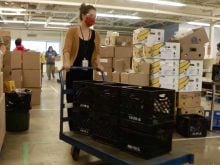One of the reasons climate mitigation systems like carbon taxes are touted is the growing risk of food insecurity in a changing climate.
But new research suggests the policies themselves, if they’re not carefully designed, could fuel even more widespread hunger and food insecurity than the direct impacts of climate change.
Those are the findings published by a team from the International Institute for Applied Systems Analysis in the journal Nature Climate Change recently.
It is the first international study to compare across models the effects of climate change on agriculture with the costs and effects of mitigation policies, and look at subsequent effects on food security and the risk of hunger.
Read Also

Journal pulls long-cited glyphosate study for ethics violations
The journal Regulatory Toxicology and Pharmacology has retracted a 2000 Monsanto-linked glyphosate review, drawing new scrutiny as Bayer faces mounting legal pressure.
Lead researchers Tomoko Hasegawa, a researcher at IIASA and Japan’s National Institute for Environment Studies (NIES), and Shinichiro Fujimori, an IIASA researcher and associate professor at Kyoto University, summarized outputs of eight global agricultural models to analyze various different scenarios to 2050.
By 2050, the models suggest that climate change could be responsible for putting an extra 24 million people at risk of hunger on average, with some models suggesting up to 50 million extra could be at risk. However, if agriculture is included in very stringent climate mitigation schemes, such as a global carbon tax or a comprehensive emission trading system applying the same rules to all sectors of the economy, the increase in food prices would be such that 78 million more people would be at risk of hunger, with some models finding that up to 170 million more would be at risk.















